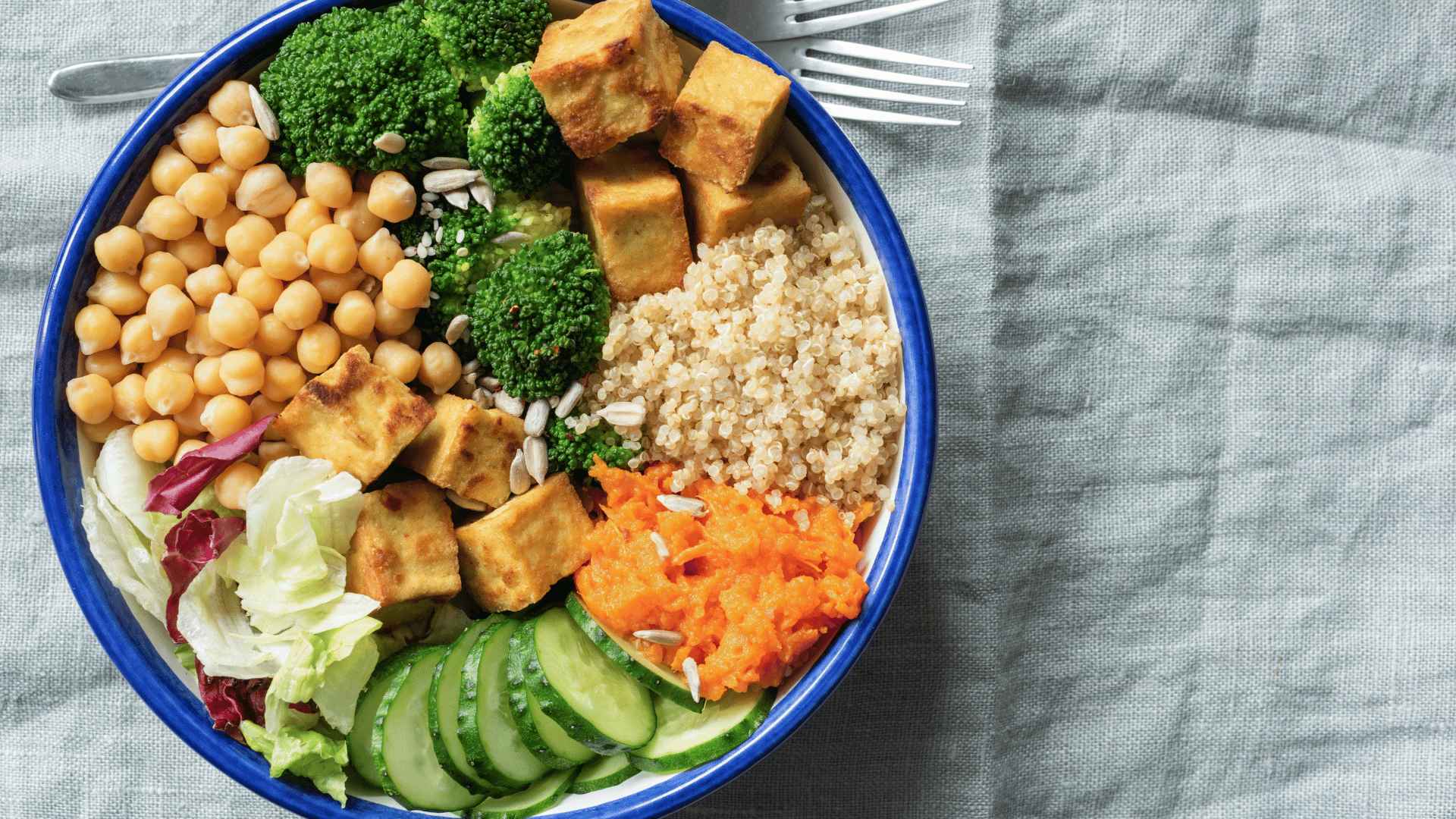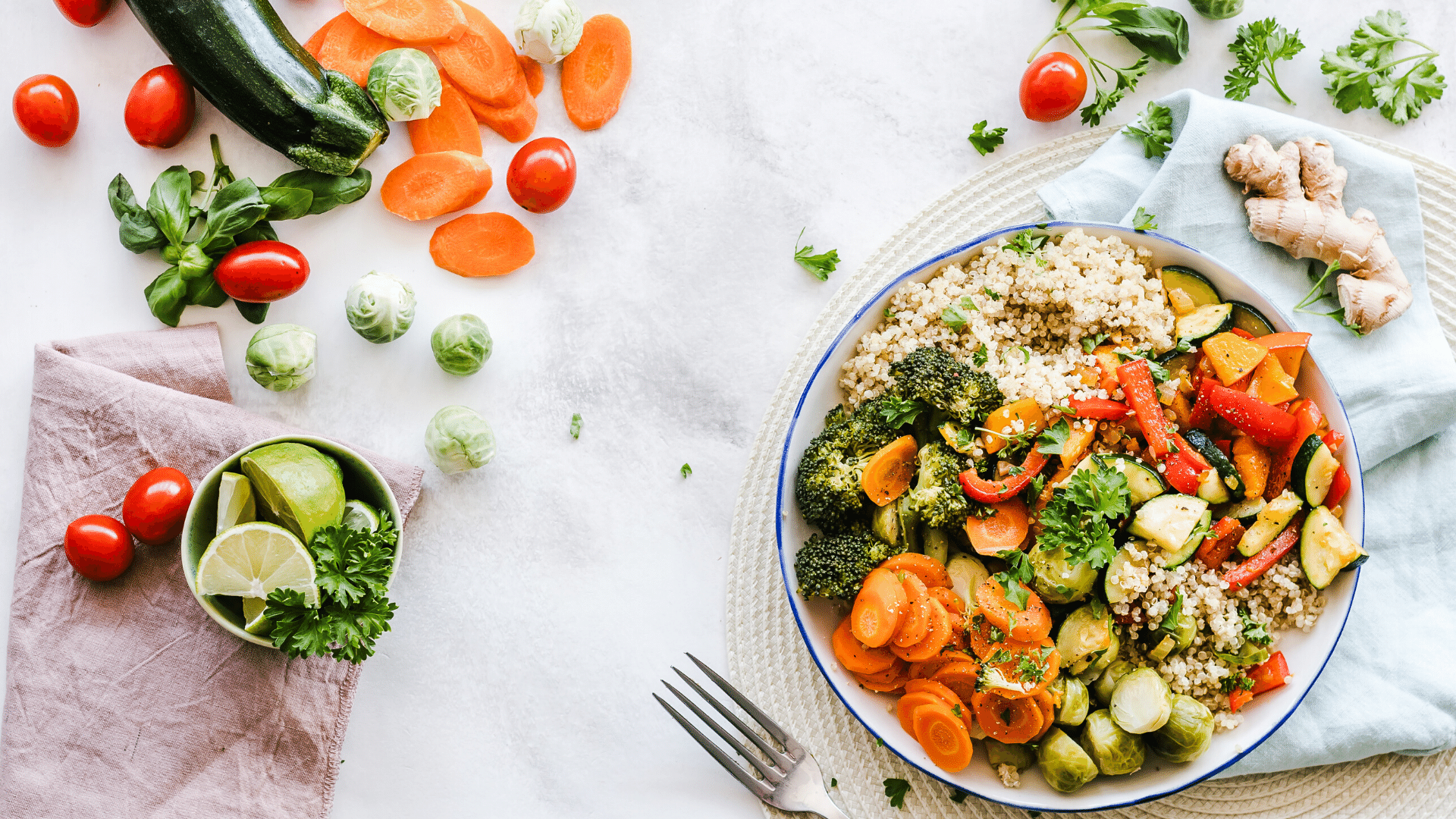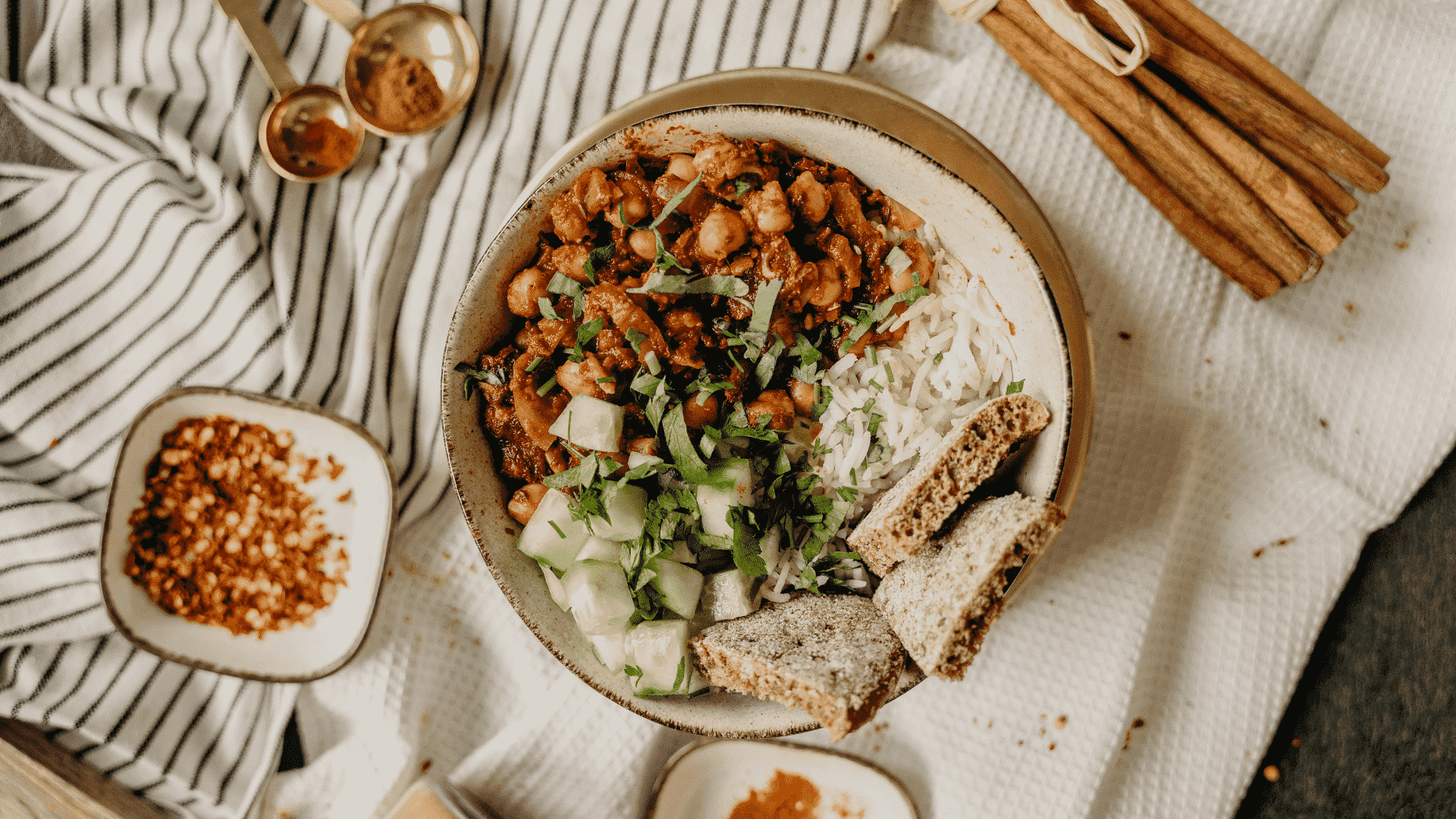Join us as we set off on a fascinating tour into the realm of vegan Filipino recipes, where traditional foods are combined with contemporary ideals to produce a delectable combination of flavor and conscience. The trade, colonization, and long-standing customs that have shaped Filipino cuisine over the years have created a complex ballet of flavors.
Origins
As we go through time, we learn about the development of veganism, its leading figures, and the critical occasions that helped it become widely accepted. As more people adopt veganism, a lifestyle that aims to balance dietary preferences with compassion for animals and the environment, there has been a paradigm shift in the Philippines in recent years. This chapter explores the origins of veganism in the Philippines and charts its development alongside international ethical movements. We come across trailblazing people, eateries, and grassroots organizations that have carved out a place for plant-based life in a world where meat-centric customs are the norm.
Innovation
It may seem impossible to recreate popular Filipino recipes without using animal products, but creative chefs and amateur cooks are up to the task. This chapter demonstrates how traditional Filipino flavors are deftly weaved into vegan versions of adobo, pancit, and other favorites through the creative mixture of a potpourri of mouthwatering recipes. We learn how culinary innovation is changing how Filipinos see their culinary history, from the utilization of indigenous products in vegetable recipes to ingenious substitutes.
The vegan Filipino recipes serve as proof that it is possible for humans and nature to coexist peacefully in the production of food. Contrary to popular belief, a vegan diet can provide an abundance of nutrients that nourish the body and support optimum health. This chapter dispels misconceptions about the supposed shortcomings of veganism by using scientific data and nutritional knowledge. We celebrate the diversity of plant-based cuisine options with vegetable dishes that delight the palate while nourishing the body, from colorful fruits and fresh vegetables to robust grains and legumes.
Vegan Food Recipes in the Philippines
Filipino Tofu Adobo
A popular and classic Filipino dish called adobo made vegan is tofu adobo! Instead of utilizing animals like chicken or pork, it is prepared using tofu and mushrooms with the traditional, savory adobo sauce recipe. Here is a vegan version of the national dish of the Philippines, which has a tasty adobo sauce that tastes sweet, tangy, and savory.
Almost every Filipino home serves this delicious dish on special occasions, holidays, and even everyday occasions. It's hardly surprising that this Filipino vegetable recipe will become a family favorite given how simple, savory, and delectably tasty it is to prepare. Listed below are all the ingredients you will need:
Dark soy sauce, oyster mushroom sauce, white vinegar, garlic, bay leaf, brown sugar, cracked peppercorns, chili powder, firm tofu, canned whole button mushrooms or fresh mushrooms, vegetable oil, salt and pepper, spring onions, or green onions
Mix the dark soy sauce, oyster mushroom sauce, white vinegar, minced garlic, bay leaf, brown sugar, peppercorns, and chili powder thoroughly in a sizable, non-reactive bowl. Add the mushrooms and tofu, and marinate for at least 30 to 60 minutes.
Tofu should be taken out of the marinade. Add the oil to a pan and heat for about a minute on medium-high. The tofu should then be cooked for 3 minutes on each side, or until it is crisp and dark brown, and then placed in a serving bowl. The mushrooms and adobo marinade should be added to the fish sauce in the same pan and cooked and simmered for 5 minutes. Mix thoroughly after adding salt and pepper to taste before adding the tofu to the sauce. Serve with steamed rice and green onions as a garnish. Enjoy!
Vegan Filipino Salpicao
Growing up, one of my favorite foods was salpicao. Of course, this vegan variation of the Filipino favorite exists. Listed below are all the ingredients you will need:
Protein: 7 oz. extra-firm tofu or tokwa
Sauce: 3 tbsp soy sauce, 2 tbsp distilled white vinegar, 2 1/2 tbsp cane sugar or other sugar, 1/2 tsp paprika powder, 1/4 tsp chili flakes, A dash of ground black pepper and 1 teaspoon of dark soy sauce are optional for color.
Salpicao: 2 tbsp vegan butter or olive oil, 12 cloves of garlic minced, 1 small red onion diced, 200 g button mushrooms or other mushrooms of choice, sliced, Salt or pepper to taste if needed.
For ten minutes, press the tofu or tokwa to remove extra liquid. My preferred method is to cover mine with a cloth, then set a plate and cutting board on top and add the oil or butter. Put the tofu slices on the pan once it is hot. For a total of about 10 minutes, pan-fry the food over medium-high heat for 2 to 3 minutes on each side, or until lightly browned. Tofu should be taken out of the pan and placed aside.
Heat 2 tablespoons of butter or olive oil in the pan over medium-high heat. When it's hot, add the garlic powder. Add the button mushrooms and cook for 3 to 4 minutes at medium-high heat. Add the soy or tofu chunks that have been pan-fried to the pan. Sauce should be added. Increase the heat to medium-high and let everything cook until the tofu has absorbed all of the sauce and it has begun to thicken. Turn off the heat and serve the salpicao over steamed adlai or your preferred grain after tasting it and adding salt or pepper to taste if necessary.
Vegan Lumpiang Shanghai
These Vegan Lumpiang Shanghai, my plant-based version of the traditional Filipino dish spring rolls, are crispy on the outside. filled with vegetables and tofu. Due to historical Chinese influence, the Philippines has a well-known Filipino recipe called Lumpiang Shanghai, which is essentially fried spring rolls (lumpia) prepared in a "Shanghai" style.
Filling: 1 tbsp neutral oil, 2 cups raw shredded carrot, 1 cup thinly sliced green beans, 1 cup raw shredded cabbage, 1 onion thinly sliced, 2 tbsp spring onions chopped, 3 cloves garlic, 1/2 tsp salt
Minced Tofu: 1 tbsp oil, 2 blocks extra-firm tofu (around 240g each), excess liquid drained (you can opt to use a tofu press), 1.5 tbsp soy sauce or to taste; 1 tbsp dark mushroom soy sauce for color and extra flavor, optional
For wrapping and frying: 15 round flour wrappers (mine were 6" in diameter), thawed at room temperature, Neutral cooking oil for frying, Sweet chili sauce for dipping or any dipping sauce of choice, Small bowl of room-temperature water
Warm up a large pan. Sauté the onion and garlic after adding the oil. Add the vegetables and salt once the meat has finished cooking. Mix well, then cook for 8 to 10 minutes over medium heat, or until the veggies are tender and the water has been absorbed. Take it out of the pan. Salt, soy sauce, and mushroom soy sauce (if using) should be used as seasonings.
Tofu should be cooked for 10 to 12 minutes, stirring every 2 minutes, or until it begins to dry out and turn into mince. Turn off the heat and add the vegetable mixture once the meat has been lightly browned and cooked through. Mix thoroughly. Place it in a basin. Allow the mixture to cool for a while. Warm up a deep frying pan with sufficient oil to completely cover the lumpia or spring rolls. Place some rolls once they're hot. Slice it in half after letting it cool for a few minutes if preferred. Eat while it's still hot and dunk in your preferred dipping sauce!
Crispy Tofu Sisig (Vegan)
A crispy tofu sisig made in the Philippines is traditionally served with a flavorful combination of onions, garlic, bell peppers, and chiles. This is a hearty vegan adaptation of the Filipino dish known as Kapampangan! The Crispy Tofu Sisig from Max's restaurant served as inspiration for this dish. It has a wonderful flavor that is savory, spicy, a little sour, and slightly sweet. Located in Pampanga on the island of Luzon, sisig is a well-known Filipino dish.
Tofu Cubes: 1 lb. extra-firm tofu, neutral oil for frying, pinch salt
Sauce Mix/Seasonings: 1 tbsp soy sauce, 1 tbsp vegetarian mushroom oyster sauce or stir-fry sauce, 1 tbsp calamansi juice or lemon juice, 1 tsp sugar, 1 tsp ground black pepper, 2 tbsp water
For sautéing: 1-2 tbsp vegan butter or neutral oil, 1 medium onion diced, 2 tsp minced garlic, 1 small red bell pepper diced, 3 bird’s eye chiles, siling labuyo, or Thai chiles, deseeded (if needed) and sliced, 2 long green chilies, deseeded (if needed) and sliced—I used siling haba, 3.5 tbsp. fresh or rehydrated shiitake mushrooms or other mushrooms such as oyster, button, sliced baby bella mushrooms, black fungus, or wood ear mushrooms, finely diced (see notes), 1/2–1 tbsp vegetarian mushroom oyster sauce or stir-fry sauce, to taste (if needed), soy sauce or liquid seasoning like Knorr, to taste (if needed), 2 tbsp. vegan mayonnaise
Heat your large pan over high heat. Add some vegan butter or oil to coat the surface of the pan. Add the tofu cubes once the mixture is heated. When you add the tofu cubes to the oil, they should start to sizzle right away. Salt should be added to the tofu cubes. If you're pan-frying them, you might need to turn them over. Continue doing this until each side is crisp and golden brown.
1-2 tablespoons of oil should be added to the same pan. The onion should be sautéed for one minute on high heat before the garlic is added. Add the crispy tofu after that. Add the sauce mixture and turn the heat down to medium-high. Combine all the ingredients. Once the tofu is beautifully covered in the vegan mayonnaise, add the vegan mayonnaise and thoroughly combine everything. If you want the whole experience, turn off the heat and serve the food while it's still hot and sizzling on a dish.
Vegan Ube and Cheese Pandesal
Here is a delicious vegan version of the ube (purple yam) pandesal that has been a popular pasta dish sweeping the Philippines in recent months. Imagine a combination of sweet and a little salty from the cheese in these pandesal, also known as Filipino Sweet Bread Rolls, which are stuffed with an ube (purple yam) filling and some vegan mozzarella cheese.
Filipino sweet bread rolls, or pandesal, are a well-known component of both Filipino food and culture. Although we typically eat them for breakfast or merienda (an afternoon snack), you can eat them at any time. This variation uses purple yam sweetbread rolls, or ube pandesal. Ube spread and vegan mozzarella cheese are used to fill these ube pandesals.
The ingredients for the dough are very simple. You’ll just need the following: 4 cups (500g) all-purpose flour, plus around 4 tbsp more if needed; 6 tbsp (90g) cane sugar; 1 1/2 tsp instant yeast; 1 tsp salt Simply mix all the dry ingredients in a large bowl.
For the wet ingredients, you’ll need the following: 1 cup warm soy, coconut, or oat milk; 3 tbsp neutral oil; 1 tsp ube extract (optional); Ube puree
Simply combine the wet ingredients with the remaining dry ingredients in a bowl to make the dough. You must thoroughly combine everything! In reality, the dough will be extremely sticky at first. So, have some additional flour available to add to the dough as well as some oil to rub on your hands.
The kneading procedure could be a little challenging at first because the dough will be extremely sticky. Place the dough ball in the basin after rubbing some oil on it. Give the dough at least an hour to rise in a warm area of your kitchen or house. Divide the dough into 20 pieces when it has risen. Leave the pandesal in the oven for 20 to 22 minutes, or until the top is firm and feels slightly crunchy to the touch. The inside will be really fluffy and airy.
Filipino Vegan Kare-kare
Vegan Filipino Kare-Kare, also known as peanut stew, is made with long beans, snap peas, green papaya, eggplant, and pechay tagalog (a vegetable similar to bok choy). The annatto seeds that give Kare-Kare its distinctive orange-ish yellow color, when soaked, produce a deep scarlet tint.
Although ox tail is the typical ingredient in Filipino cooking, kare-kare is a Filipino vegetable dish. Naturally, since this was a vegan version of a popular noodle dish, only vegetables were utilized. I combined pechay, which is a vegetable akin to boy choy, long beans, and Chinese eggplants. Here are the ingredients:
Annatto Mixture: 1 1/2 tsp. ‘atsuete, or annatto seeds, optional for color (see notes), and 1/4 cup hot water for the annatto.
Kare-Kare: 4 medium Chinese eggplants, 380g; see notes for other vegetable options! 400 g long beans (sitaw), 350 pechay tagalog or bok choy, 2 tbsp neutral oil, 1 small onion diced, 4 cloves of garlic roughly chopped, 1/4 cup crushed peanuts (see notes), 1/2 cup smooth and creamy peanut butter, or more! 1 cup vegetable broth OR water, and then add in 1 vegetable bouillon or cube, 1/3 cup white rice flour, 2 to 3 tbsp sugar (adjust according to desired sweetness), 1/2 to 1 tsp salt (or to taste), and additional 1/2 to 1 cup of vegetable broth or water to thin out
A large pan or wok heated at medium-high heat Add 1 tablespoon of oil. Cook the eggplant for about 4 minutes, or until just barely soft. Take it out of the pan and place it aside. For the long beans, repeat this procedure while adding a little water to help them. Finally, quickly sauté the pechay and bok choy for 2 to 3 minutes.
Add the remaining oil while keeping the same strategy. Once hot, sauté the onion and garlic for 2 minutes. Add the crushed peanuts after pushing the onion and garlic to one side of the pan. The peanuts should be lightly toasted for about 4 minutes over medium-high heat, stirring every few minutes. The fried vegetables should be added. Offset the heat when the vegetables are fully cooked. Enjoy while still hot with some vegan bagoon or vegan shrimp paste, if desired, and some steamed rice or Filipino Fried Garlic Rice.
Vegan Tapa
This vegan Filipino version of tapa is created with extra firm tofu, which is air-fried till crisp and then marinated and simmered in a sweet-salty sauce. It is served with garlic rice, tofu scramble, and, of course, some vinegar. You can eat this substantial Filipino dish for breakfast or at any other time of the day.
Traditional Filipino tapa involves brining beef with salt, letting it dry out, and then frying it till crisp. For what we like to call tapsilog, it's typically served with seasoned vinegar, a side of fried garlic rice, and a fried egg. Ingredients below for your reference:
TOFU: 17.5 oz. extra firm tofu or tokwa
Marinée/sauce: 2.5 tbsp sugar, 2 tbsp soy sauce, 1/4 tsp pepper, 1 tsp minced garlic, 4 tsp dark soy sauce, 1/3 cup vegetable broth
Vinegar, for serving: 1/4 cup distilled white vinegar, 1/2 small red onion diced, 1-2 tsp sugar adjusted to taste, 1 red chili sliced (optional)
TOFU SCRAMBLE: 1 tbsp neutral oil, 9 oz extra firm tofu tokwa pressed and drained, 1 1/2 tsp. nutritional yeast is optional. 1/2 tsp black salt or sub for regular; adjust to taste. 1/2 tsp turmeric powder, Ground black pepper, Sprinkle with liquid aminos or soy sauce, to taste.
Cooking the tapa involves heating a wok or skillet over medium-high heat and adding oil. Add the marinated tofu shreds to the tapa once it is hot. Cook the tofu shreds for 2 to 3 minutes at medium heat, stirring occasionally, until the marinade has reduced and the sugars have begun to caramelize.
Turn off the heat once the food is fully cooked and the sauce has thickened. Serve the tapa with the tomato slices, vinegar, garlic rice, and tofu scramble. Eat while it's hot. I prefer to eat this with some vinegar and onions sprinkled over the tapa, a scoop of vinegar-dipped tapa, and some garlic rice and tofu scramble.
Because many Filipinos grew up eating what their parents and grandparents prepared for them, which was probably a lot of meat and only a few ingredients of fish and common vegetables, vegan Filipino recipes are not a prevalent practice in the Philippines, and some Filipinos aren't even aware of this lifestyle.
Many of us ate eggs for breakfast virtually daily as children. You'll even notice that "silog" (the dish) and "silog-an" (the establishment serving "silog") are ubiquitous here! This is available at McDonald's in the Philippines as well. I'm not joking.
Although veganism isn't particularly common in the Philippines, there are still enough regional delicacies that can help a vegan get by. In El Nido and Coron, Palawan, you may eat a variety of vegan options of flavorful traditional dishes and foods, and there are many vegan restaurants and even eateries that welcome vegans.
It is a tribute to the power of choice as the dinner table is transformed on a cold winter evening into a setting for a vegan feast. I enjoy every bite not just for the tastes that dance on my taste senses but also because I am happy cooking and know that my actions reflect a dedication to a better, healthier world. A feast for my heart and soul, a sustenance that goes beyond the physical and penetrates right to the center of who I am, may be found at home in the embrace of vegan and vegetarian food only.
For more information on Vista Residences, email [email protected], follow @VistaResidencesOfficial on Facebook, Twitter, Instagram, and YouTube, or call the Marketing Office at 0999 886 4262 / 0917 582 5167.



.png)


